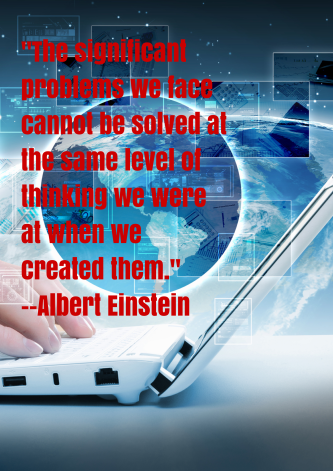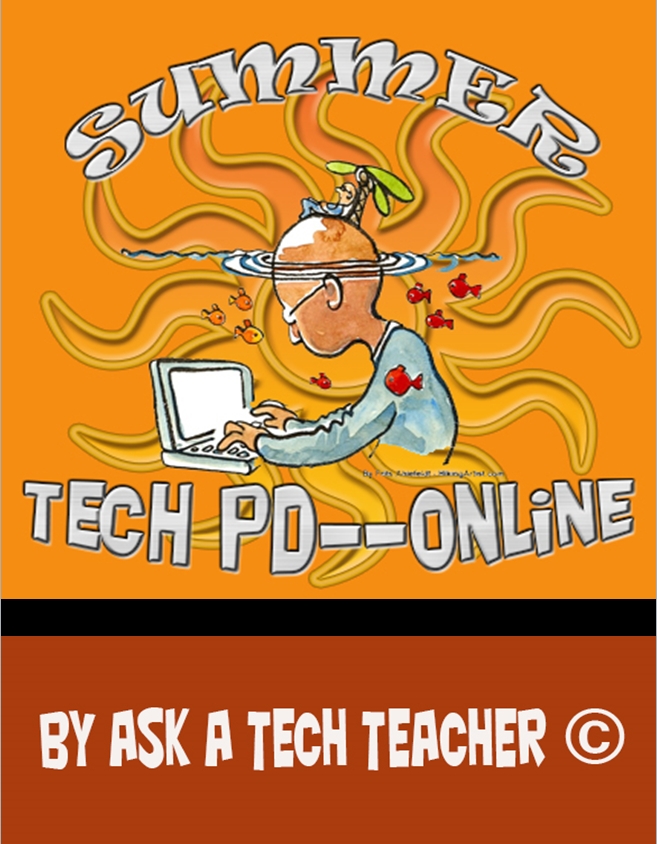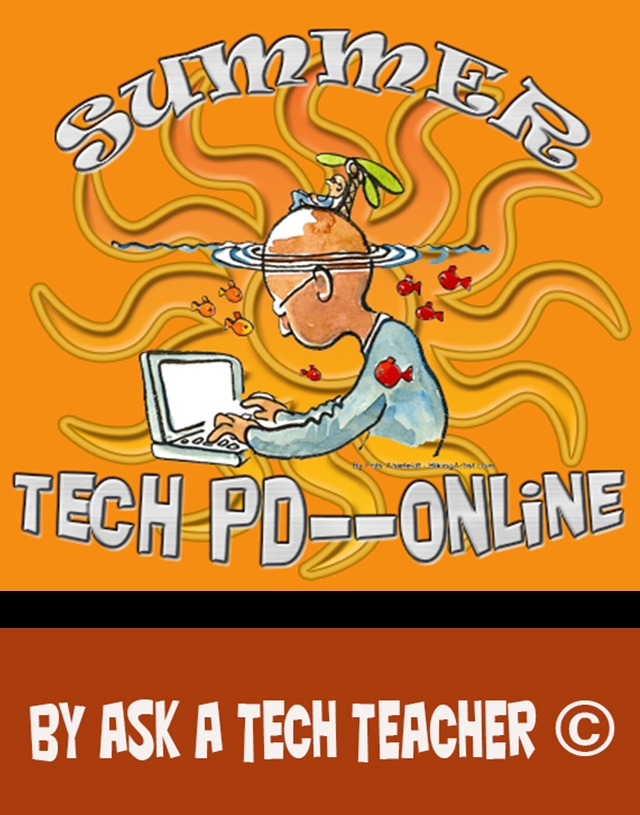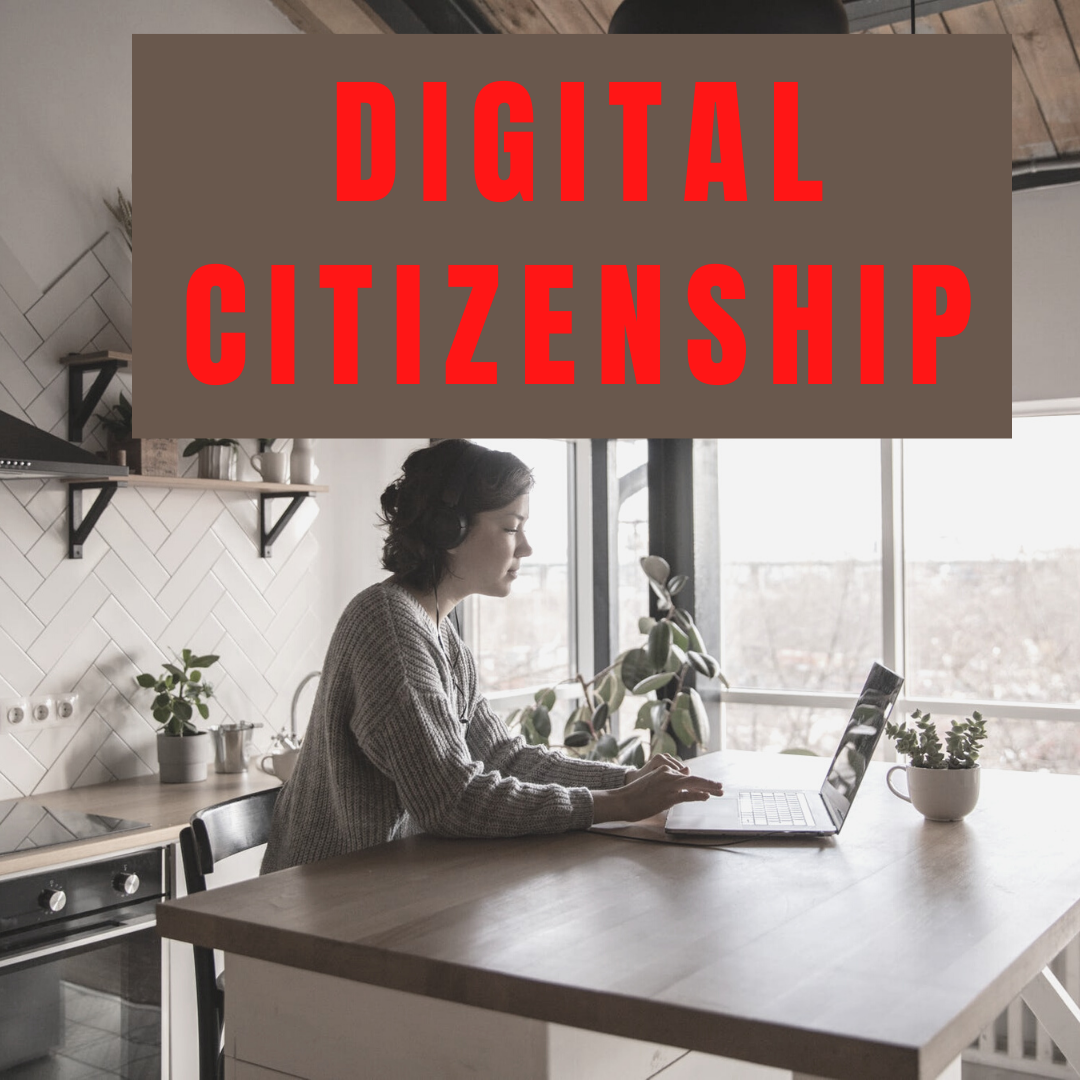If you haven’t yet made the decision to join me at Summer PD for three-weeks of high-intensity tech integration, here are the Top Ten Reasons for signing up:
10. Tech in ed is a change agent. You like change.
9. You’ll have a bunch of tech ed skills you can now say ‘I know how to do that’.
8. Your school will pay for it of you promise to teach colleagues–or show the videos.
7. It’s fun.
6. You want to meet new people.
5. You’re technophobic, but lately feel like teaching without technology is like looking at a landscape through a straw. You want to change that.
4. Richard Sloma said, “Never try to solve all the problems at once — make them line up for you one-by-one.” You want your tech problems lined up in single file.
3. Technology in education is the greatest show on earth. Well, at least in the classroom. You want to be part of it.
2. Ashton Kutcher told teens, “Opportunity looks a lot like work.” You agree. Learning tech ed this summer is an opportunity you’re ready for.
1. Albert Einstein said, “The significant problems we face cannot be solved at the same level of thinking we were at when we created them.” Education’s fix requires technology. You’re ready for a new level of thinking.
For more information, click here and here.
To sign up, click here.
Still need to know more? Here are a few questions I’ve gotten since we last talked:
Who the target population is?
Summer PD is for credentialed and non-credentialed K-8 teachers, tech teachers/integration specialists, library media specialists, and pre-service professionals. Some teachers (in some states) are taking this for re-certification.
Is the course content theory or teaching how to teach?
This 18-hour course provides students with first-hand experience leveraging technology as a strategic tool when teaching academic topics. A secondary focus (but of significant interest with students I polled) is technology as change agent in achieving Common Core Standards, enabling teachers to fulfill Common Core requirements without adding that ‘extra layer’ many teachers fear will take more time/knowledge/effort than they have time for.
The intent of the class is to use these tech tools to infuse learning so teachers come away with not just a theoretical understanding of, say, digital note-taking, but the practical application of these tools for three weeks in class. In this way, teachers will be able to select the strategic tech tool appropriate for audience, task, and purpose in their own teaching.
Topics attendees will learn by doing include:
- Blogging—to reflect, collaborate with classmates, share perspectives during class, complete assessments in some cases. Also, teachers will embed web tools (i.e., a Tagxedo or Voki) into their blogs, as well as screencasts and screenshots where these are appropriate.
- Digital note-taking—with a variety of tools. Student will receive options and pick one or more, then share notes with classmates and/or instructor
- Digital portfolios—via wikis
- Exit Tickets—each class requires an exit ticket using a digital tool (often the one addressed during class, sometimes a blog post or Tweet)
- Flipped Classroom—attendees learn in a ‘flipped classroom’
- Google Apps—students will use various Google apps to take notes, answer polls, complete forms, collect data
- Twitter—used to share notes, thoughts, mini-assessments, to collect information via #hashtags
- Webinars—experiencing how webinars and Google Hangouts are used in teaching
The intent is to make these topics less intimidating, within reach of even teachers who consider themselves geekless or technophobic. I think that’s a large underserved group of teachers. Those I talk to say they don’t understand how to use technology no matter how many examples they see or webinars they attend. This class addresses the need for practical application. Attendees are expected to be risk takers, willing to reach outside their comfort zone, fail if that’s the result of trying. Just as they tell students, it’s OK. That’s called ‘learning’.
One note about course content: With registration, teachers get reference materials that may only be addressed tangentially, but are considered fundamental to the integration of tech into their own classrooms (for example, a list of 98 tech tips that are common problems when students use digital devices).
How is it taught?
The student classroom is a wiki. Here, attendees receive their daily assignments via video, articles, links, lesson plans to review. Each student has their own personal page that serves as their class digital portfolio. At the end of the three weeks, successful students receive a Certificate of Completion listing hours and skills.
Jacqui Murray has been teaching K-18 technology for 30 years. She is the editor/author of over a hundred tech ed resources including a K-12 technology curriculum, K-8 keyboard curriculum, K-8 Digital Citizenship curriculum. She is an adjunct professor in tech ed, Master Teacher, webmaster for four blogs, an Amazon Vine Voice, CSTA presentation reviewer, freelance journalist on tech ed topics, contributor to NEA Today, and author of the tech thrillers, To Hunt a Sub and Twenty-four Days. You can find her resources at Structured Learning.




































